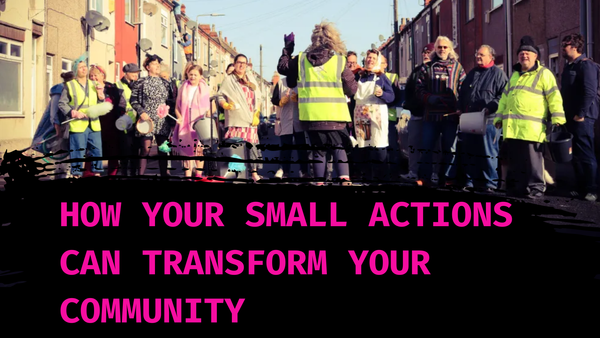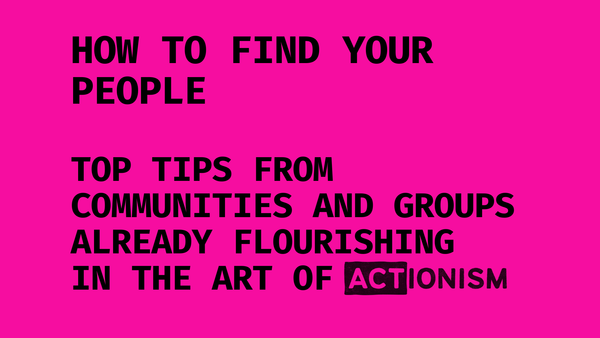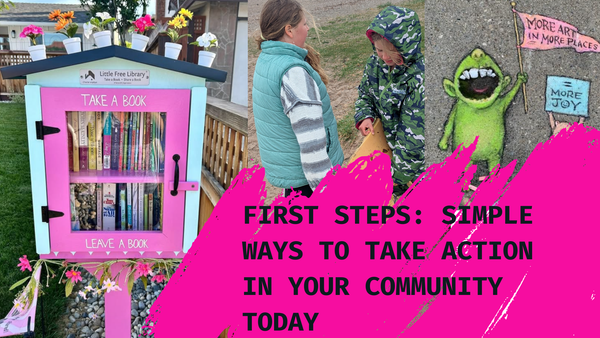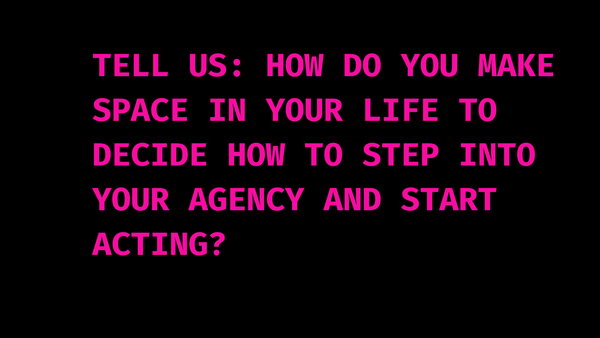Changing the way we engage with our clothes - Rebel Patch
Not everyone wants a shortcut to mending. There are people who happily learn a skill and spend time refining it. I wish I had trusted my gut instinct a bit more and not followed the capitalist notion of ‘if it’s not easy or convenient people won’t buy it’.
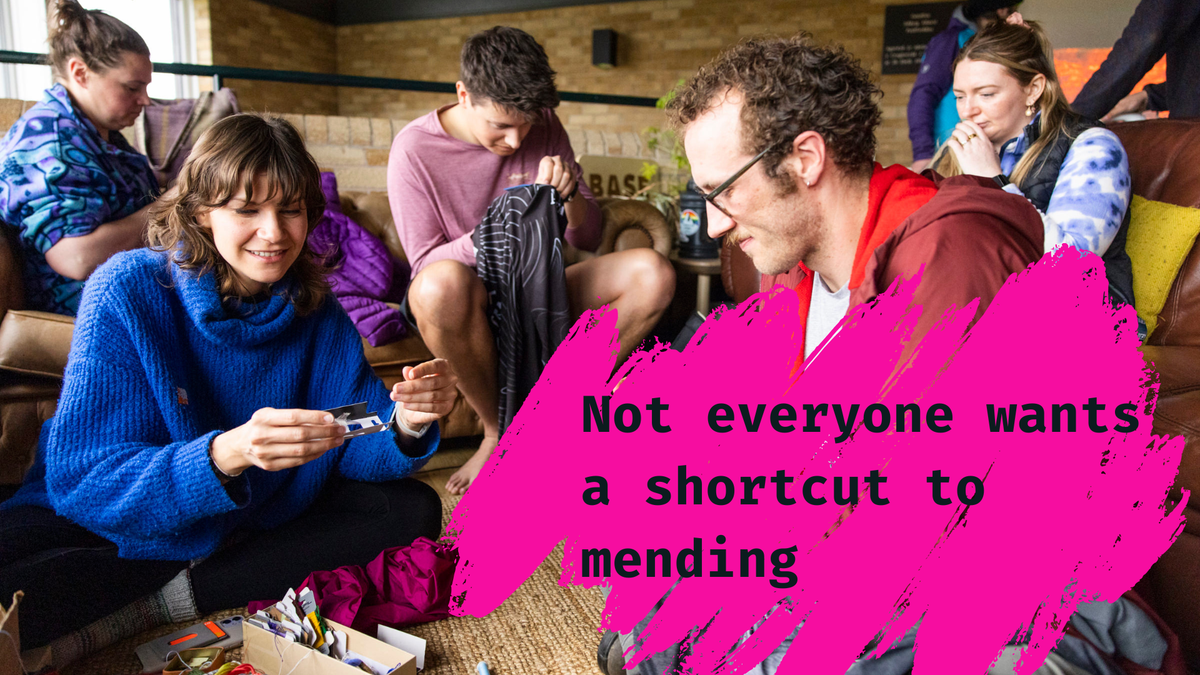
An interview with Lisa Matzi
What were the triggers for starting down this journey?
Leading up to starting Rebel Patch I had been working on expanding my knowledge around sustainability around solutions for the climate crisis.
I co-founded a community called ‘And the Future?’ We ran a monthly book club, focusing on books that expanded our knowledge. The books were as varied as the solutions - we dove deep into every topic from alternative economic models to regenerating land to queer ecological thinking.
The topics that always stuck with me the most were usually about fashion activism. We read ‘Loved clothes last’ by Orsola De Castro and it was one of the books that had the most profound impact on me. She talks a lot about how to take responsibility for your own consumption and clothing repair was one of the suggestions in it. I took a mental note, and darned one pair of socks and sewed on a loose button. It was the first time I actually mended my clothes myself. That was 2018.
The book also inspired me to spend an entire year only buying clothes second hand after I learnt about fashion (over)production.
How did you identify that there was a need for Rebel Patch?
I properly started my visible mending journey when I lived in my little van in Portugal and simply had to mend the clothes I had with me. I had so little space I didn’t buy anything and I also wanted to find a simple, low equipment way to be creative. So when I stumbled across an online course for visible mending I felt like this was the perfect combination of being creative whilst also learning a useful skill that helped me maintain my wardrobe.
I got so hooked on darning that I darned things that didn’t even need to be darned, just to add pops of colour or texture or simply to practice my skill.
I asked people around me if they had anything for me to fix and soon after I got asked by someone in town to host a darning workshop and this is really where it all began. A few people who attended told me afterwards how much they enjoyed working with their hands, that they felt so relaxed and focused and most of all that they experienced a deeper sense of connection to the item of clothing they had mended, a newfound love and appreciation – not just for the piece of clothing but also for their own skill, care and time that they had just dedicated to it. And that is what I wanted to see more of. This to me felt like the antidote to mindless consumerism and disconnection.
After I taught my first darning workshop I set out to find a way to make mending more accessible. Darning is an amazing skill that is considered easy to learn (if it comes easy to you) but I quickly realised that not everyone has the time, capacity or ability to learn it. To reach as many people as I could, I looked into current solutions for clothing repair and quickly landed on iron on patches.
Iron on patches are easy to use, quick to apply and you don't require being taught how to use them - the perfect solution. But the ones I came across were mostly your classic rainbows and smiley faces (nothing wrong with those btw!) and I felt there was a lack of different aesthetics and variety in sizes. On top of that, most of them were produced using plastic based materials and had travelled a long way to sit in my local haberdashery. I wanted to re-invent the iron patch. I thought of all of my talented friends who are artists, photographers, writers - surely there must be a way to get their art onto a patch?
I wanted to start a movement. I wanted as many people as possible to experience the joy, the creativity and the connectedness that comes with mending. Especially mending when done in community.
What did you find difficult when starting out?
You need a lot of patience in a world that tells you everything is supposed to happen quickly. We’re sold this idea that if you aren’t successful instantly you’re doing it wrong. When the reality is so much more layered and complex. It takes time to find your audience, build community, perfect your skills and spread the word. That is in fact the natural way of change. And getting people to mend their clothing in a world that is selling them fast fashion at every corner is a huge behaviour and mindset shift that simply takes time and many many interactions before it takes root in public consciousness.
What have you now learnt that you wish you’d known before starting?
Not everyone wants a shortcut to mending. There are people who happily learn a skill and spend time refining it.
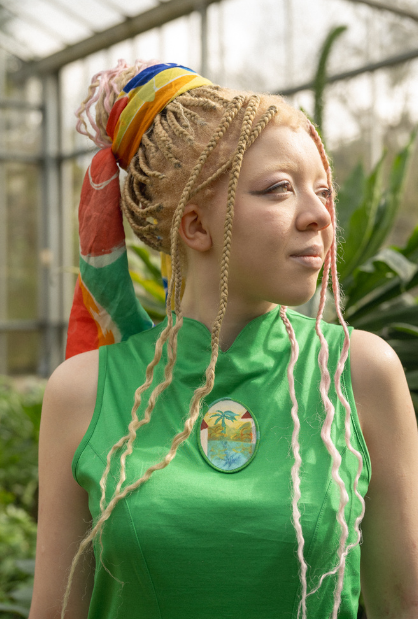
I wish I had trusted my gut instinct a bit more and not followed the capitalist notion of ‘if it’s not easy or convenient people won’t buy it’. There is so much more to mending than making something useful again. The fact that you are giving a piece of clothing another lease of life is wonderful but also just one of the many positive things that come from it. Many people have said they felt more creatively empowered, less scared of trying things, calmer and more relaxed working with their hands and more connected to the things they own.
It turns out that the people who care don’t mind giving their time and they don’t mind to be ‘inconvenienced’ when learning a new skill. They want to spend time on their clothes, make mistakes and learn in the process.
What role has the community played in your journey?
Community has been a cornerstone of Rebel Patch and it is one of the core values I have built this project on. I wanted to start a movement. I wanted as many people as possible to experience the joy, the creativity and the connectedness that comes with mending. Especially mending when done in community. What kept me going when things got tough was the community, the people that came to my workshops, bought patches at markets and sent me pictures and messages about their mended items.
I would have never been able to even manufacture these patches had I not met Rachel Kan, founder of the Ecosystem Incubator who was my mentor for nearly a year. She helped me find my suppliers, materials and set up my entire business. Also the Bristol Textile Quarter whose community welcomed me with open arms despite having zero knowledge or experience working in textiles and that lead me to finding my amazing local manufacturer.
Also, obviously, the Re-Action Collective has been an absolute anchor to everything I do - having a community around you of like minded people who just get it is so vital when starting a business. It’s what gets you through the hard days and in my opinion, everything is better when done in community.
Lisa is the founder of Rebel Patch, changing the way we engage with our clothes. Giving rarely worn, stained or damaged clothing deserves a second lease on life.

